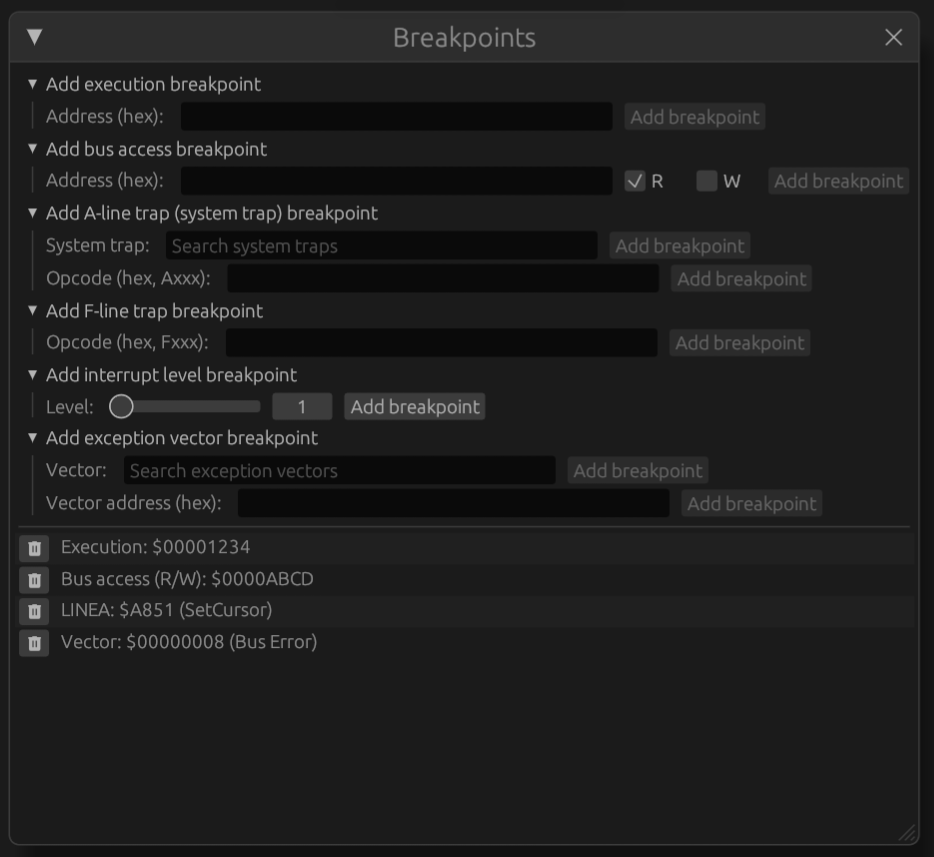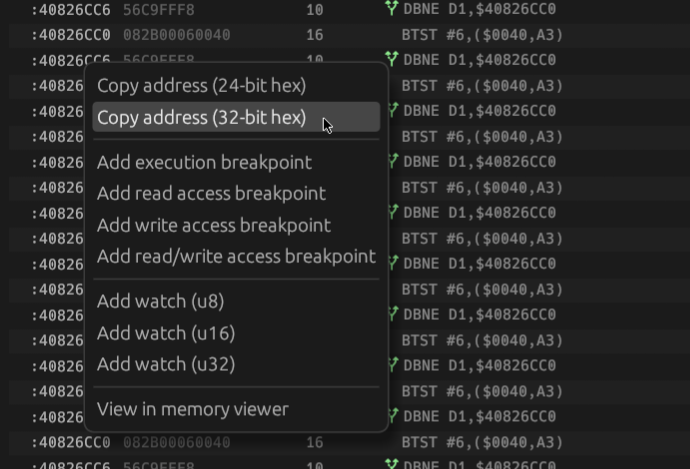Breakpoints
Snow supports several types of breakpoints:
- Execution breakpoints: breaks execution when PC arrives at a certain location in the execution flow.
- Bus access breakpoints: breaks when the CPU reads or writes a specified bus address.
- A-line/system trap breakpoint: breaks when a certain A-line instruction is executed. The Macintosh uses these unimplemented instructions as 'system traps' or 'system calls'.
- F-line trap breakpoint: breaks when a certain unimplemented F-line instruction is executed. The 68k CPUs used this instruction prefix for co-processor instructions (e.g. FPU or PMMU). Note that this will only break on unhandled F-line instructions that will call the trap handler and will not break on e.g. a valid FPU instruction.
- Interrupt level breakpoint: breaks when the CPU's interrupt level is raised (by hardware); e.g. when an autovector interrupt of a certain level is raised.
- Exception vector breakpoint: breaks when the CPU jumps to the specified exception vector.
Managing breakpoints
To set new and manage current breakpoints, open the Breakpoints dialog using the 'View > Breakpoints' menu item.

Use the appropriate dropdown to manually add breakpoints. To remove a breakpoint, click the delete button.
Adding breakpoints
Breakpoints can be added manually using the Breakpoints dialog but also added by right-clicking an address visible anywhere in the user interface and clicking a context menu item:

Execution breakpoints can also be added or removed by clicking the red circle in the disassembly view.